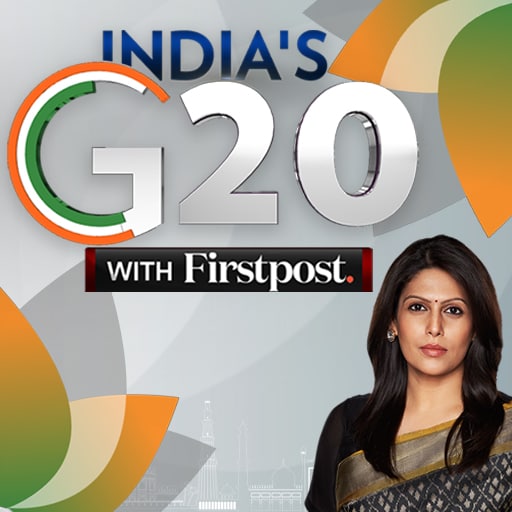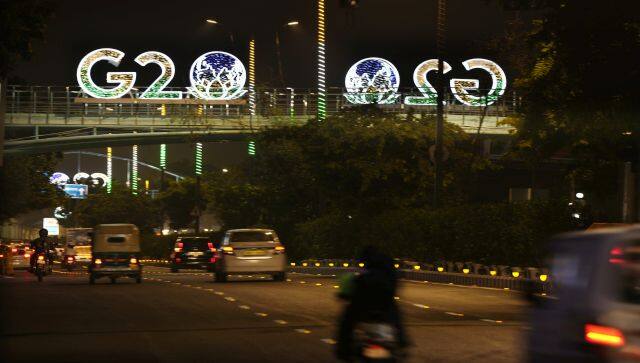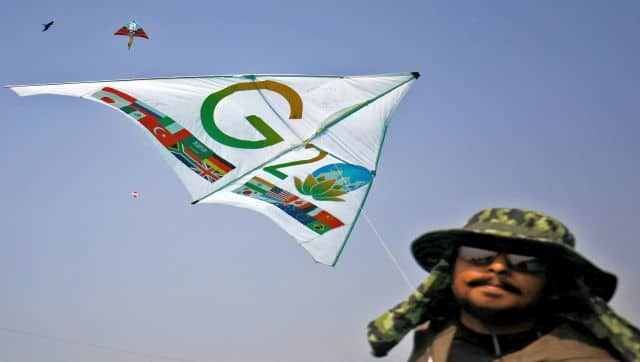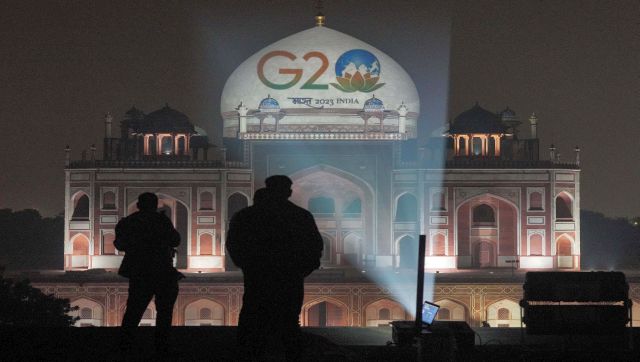
All eyes are on India as it readies to host the G20 Heads of State and Government Summit. More than 40 world leaders are expected to gather in New Delhi for the conclave on 9 and 10 September. Pegged as one of the biggest diplomatic events hosted by India, the meeting will mark the conclusion of the country’s year-long presidency. It will end with the adoption of the
G20 leaders’ declaration
, a joint statement issued by participating nations stating commitment towards priorities agreed upon over the year during ministerial and working group meetings. In the run-up to the big gathering, here’s a primer on all things related to the international forum. Here’s a primer on all things related to the international forum. Don’t miss: The complete coverage of the G20 Summit 2023
What’s the G20? Today, the Group of Twenty (G20) is the premier forum for international economic cooperation. It plays an important role in shaping and strengthening global architecture and governance on all major international economic issues. The G20 comprises 19 nations – Argentina, Australia, Brazil, Canada, China, France, Germany, India, Indonesia, Italy, Japan, the Republic of Korea, Mexico, Russia, Saudi Arabia, South Africa, Turkey, the United Kingdom and the United States – along with the European Union. Spain is invited as a permanent guest. [caption id=“attachment_12703992” align=“alignnone” width=“640”] Graphic: Pranay Bhardwaj[/caption] The G20 members represent 65 per cent of the world population, 79 per cent of world trade, a whopping 84 per cent of the world’s economy and are responsible for 79 per cent of global carbon emissions. The idea behind the bloc is to bring together the most important industrialised and developing economies to discuss international economic and financial stability. For this, the leaders of G20 members meet yearly to discuss and formulate policies on issues of mutual interest. How did the G20 come into being? One could say that the formation of the G20 is forged in crisis. It came after the 1994 Mexican peso crisis and the 1999 Asian financial crisis. Canada’s then finance minister Paul Martin at a G7 meet realised that even though the meeting was meant to represent the most powerful economies in the world, crucial voices were missing. “This doesn’t make any sense… China and India are not here, and in fact, the great economies regionally are not at the table. Don’t you think that we should be doing something about it,” he asked. And from there, the idea of a G20 was born. Finally, in 1999, the G20 forum was formed after initiation by Martin and his American counterpart then-Treasury Secretary Larry Summers. [caption id=“attachment_12704002” align=“alignnone” width=“640”]
Graphic: Pranay Bhardwaj[/caption] The G20 members represent 65 per cent of the world population, 79 per cent of world trade, a whopping 84 per cent of the world’s economy and are responsible for 79 per cent of global carbon emissions. The idea behind the bloc is to bring together the most important industrialised and developing economies to discuss international economic and financial stability. For this, the leaders of G20 members meet yearly to discuss and formulate policies on issues of mutual interest. How did the G20 come into being? One could say that the formation of the G20 is forged in crisis. It came after the 1994 Mexican peso crisis and the 1999 Asian financial crisis. Canada’s then finance minister Paul Martin at a G7 meet realised that even though the meeting was meant to represent the most powerful economies in the world, crucial voices were missing. “This doesn’t make any sense… China and India are not here, and in fact, the great economies regionally are not at the table. Don’t you think that we should be doing something about it,” he asked. And from there, the idea of a G20 was born. Finally, in 1999, the G20 forum was formed after initiation by Martin and his American counterpart then-Treasury Secretary Larry Summers. [caption id=“attachment_12704002” align=“alignnone” width=“640”] Graphic: Pranay Bhardwaj[/caption] Once it was decided which countries would be a part of this bloc, the representatives met in Berlin, Germany, for the first annual meeting of the group. Heads of government/State started participating years later, in 2008. Interestingly, the United States showed reluctance to push the G20 to the leaders’ level. Speaking of it, Martin said, “President George W Bush was reluctant — he wasn’t against it, but he wasn’t for it.” In 2009, G20 was designated the “premier forum for international economic cooperation”. Over the next few years, the forum, as former South African president Thabo Mbeki put it, emerged “as a central player in the global financial architecture and an effective contributor to global economic and financial stability.”
Graphic: Pranay Bhardwaj[/caption] Once it was decided which countries would be a part of this bloc, the representatives met in Berlin, Germany, for the first annual meeting of the group. Heads of government/State started participating years later, in 2008. Interestingly, the United States showed reluctance to push the G20 to the leaders’ level. Speaking of it, Martin said, “President George W Bush was reluctant — he wasn’t against it, but he wasn’t for it.” In 2009, G20 was designated the “premier forum for international economic cooperation”. Over the next few years, the forum, as former South African president Thabo Mbeki put it, emerged “as a central player in the global financial architecture and an effective contributor to global economic and financial stability.”
When was the first G20 Leaders’ Summit held? While meetings were held between 1999 and 2008, they were largely low-key. After the global financial crisis of 2008, the grouping became more significant. The first G20 Leadership Summit was held in Washington DC in November 2008 – the “Summit on Financial Markets and the World Economy”. It was attended by leaders of the 20 member nations, heads of the International Monetary Forum, the World Bank, and the United Nations along with Spain and the Netherlands. Since then the summit has become an annual affair. How does the G20 work? The G20 has no permanent leader and each year a country is decided to assume the presidency of the forum. The year 2023 sees India at the helm. The previous year saw Indonesia. The country with the presidency steers the G20 agenda and hosts the summit.
Also read: Why G20 presidency is important for India
However, it is supported by two other nations. One of the two nations must have had the presidency last year and the other nation is expected to assume the presidency the following year. This arrangement is called the Troika. Indonesia, India and Brazil are the Troika countries right now. [caption id=“attachment_12704082” align=“alignnone” width=“640”] India assumed the presidency of the G20 on 1 December 2022. It will helm the affairs of the bloc until 30 November of this year. Reuters[/caption] The agenda and work of the G20 are carried out through three distinct tracks – the Sherpa track, the finance track and the engagement groups. The
Sherpa track
is led by emissaries of the respective member nations. The Sherpas directly report to the Heads of the States of their respective nations. The Sherpa Track is mostly concerned with non-financial discussions revolving around agriculture, anti-corruption, culture, development, education energy, trade, tourism, health, digital economy, etc. The
finance track
is spearheaded by finance ministers and central bank governors of member states. They discuss and deliberate on issues such as international financial architecture, taxation, and finance and health. The engagement group is led by non-government participants who contribute to policy-making and the G20 Leaders. It works with think tanks, civil societies, youth, businesses, women, labour, etc that contribute to the G20 Summit. What is the role of a nation during the G20 presidency? Members of the G20 are divided into five groups and every year the presidency goes from one group to another.
India
is in Group 2 with Russia, South Africa, and Turkey. Every country within a group is eligible for the presidency when the group’s turn comes. The nations negotiate among themselves and decide on who will take the mantle. The presidency will now go to Brazil, which is in Group 3 along with Argentina and Mexico. [caption id=“attachment_13086612” align=“alignnone” width=“640”]
India assumed the presidency of the G20 on 1 December 2022. It will helm the affairs of the bloc until 30 November of this year. Reuters[/caption] The agenda and work of the G20 are carried out through three distinct tracks – the Sherpa track, the finance track and the engagement groups. The
Sherpa track
is led by emissaries of the respective member nations. The Sherpas directly report to the Heads of the States of their respective nations. The Sherpa Track is mostly concerned with non-financial discussions revolving around agriculture, anti-corruption, culture, development, education energy, trade, tourism, health, digital economy, etc. The
finance track
is spearheaded by finance ministers and central bank governors of member states. They discuss and deliberate on issues such as international financial architecture, taxation, and finance and health. The engagement group is led by non-government participants who contribute to policy-making and the G20 Leaders. It works with think tanks, civil societies, youth, businesses, women, labour, etc that contribute to the G20 Summit. What is the role of a nation during the G20 presidency? Members of the G20 are divided into five groups and every year the presidency goes from one group to another.
India
is in Group 2 with Russia, South Africa, and Turkey. Every country within a group is eligible for the presidency when the group’s turn comes. The nations negotiate among themselves and decide on who will take the mantle. The presidency will now go to Brazil, which is in Group 3 along with Argentina and Mexico. [caption id=“attachment_13086612” align=“alignnone” width=“640”] G20 logos are illuminated with the colours of the Indian flag on a pedestrian bridge in New Delhi. Ahead of the summit, historical monuments, airports and major landmarks are projecting this year’s G20 logo an image of a globe inside a lotus, using the colours of the Indian flag. AP[/caption] The country that holds the presidency sets the agenda for the year after consultation with other members. Global events also determine the agenda. The president hosts meetings throughout the year and it culminates with the leadership summit. It invites other guest countries and global organisations to take part in meetings. What are the achievements of G20? Since its inception, the G20 has worked to encourage the formation of consensus on international issues. It played a key role in steering the world out of a global economic crisis in 2008-2010. Many experts credit the G20 with quick action. Former Council on Foreign Relations (CFR) fellow Stewart Patrick said that the group “rescued a global financial system in free fall”. In 2008 and 2009, G20 nations agreed to spend $4 trillion to revive their economies, rejected trade barriers, and implemented far-reaching reforms to the financial system. [caption id=“attachment_12704102” align=“alignnone” width=“640”]
G20 logos are illuminated with the colours of the Indian flag on a pedestrian bridge in New Delhi. Ahead of the summit, historical monuments, airports and major landmarks are projecting this year’s G20 logo an image of a globe inside a lotus, using the colours of the Indian flag. AP[/caption] The country that holds the presidency sets the agenda for the year after consultation with other members. Global events also determine the agenda. The president hosts meetings throughout the year and it culminates with the leadership summit. It invites other guest countries and global organisations to take part in meetings. What are the achievements of G20? Since its inception, the G20 has worked to encourage the formation of consensus on international issues. It played a key role in steering the world out of a global economic crisis in 2008-2010. Many experts credit the G20 with quick action. Former Council on Foreign Relations (CFR) fellow Stewart Patrick said that the group “rescued a global financial system in free fall”. In 2008 and 2009, G20 nations agreed to spend $4 trillion to revive their economies, rejected trade barriers, and implemented far-reaching reforms to the financial system. [caption id=“attachment_12704102” align=“alignnone” width=“640”] Over the years, the G20 has played a prominent role in global problems. Its importance was especially felt during the 2008 US economic crisis. Reuters[/caption] Since the economic crisis, the G20 has made commitments around issues that could be considered to fall under the “social agenda.” In 2014, in Brisbane, it pledged to reduce the gap between men and women in the workforce by 25 per cent by 2025. In 2017, in Hamburg, the G20 launched the “Compact with Africa” initiative, which aims to promote and improve private sector development and investment. The same year, 19 members vowed to uphold their commitment to the Paris Agreement on climate change, despite the then-US president Donald Trump’s announcement that his country would be pulling out. During the COVID-19 pandemic, the G20 undertook many measures to support economies and supply chains. It also lent its support to international organisations – the World Health Organization (WHO) and International Monetary Fund (IMF). In March 2020, G20 nations committed to pumping more than $5 trillion into the global economy and contributing to the WHO-led COVID-19 solidarity response fund. Moreover, the G20 countries agreed to ease the burden of debts by allowing the poorest countries to suspend repayment of official bilateral credit. [caption id=“attachment_12704182” align=“alignnone” width=“640”]
Over the years, the G20 has played a prominent role in global problems. Its importance was especially felt during the 2008 US economic crisis. Reuters[/caption] Since the economic crisis, the G20 has made commitments around issues that could be considered to fall under the “social agenda.” In 2014, in Brisbane, it pledged to reduce the gap between men and women in the workforce by 25 per cent by 2025. In 2017, in Hamburg, the G20 launched the “Compact with Africa” initiative, which aims to promote and improve private sector development and investment. The same year, 19 members vowed to uphold their commitment to the Paris Agreement on climate change, despite the then-US president Donald Trump’s announcement that his country would be pulling out. During the COVID-19 pandemic, the G20 undertook many measures to support economies and supply chains. It also lent its support to international organisations – the World Health Organization (WHO) and International Monetary Fund (IMF). In March 2020, G20 nations committed to pumping more than $5 trillion into the global economy and contributing to the WHO-led COVID-19 solidarity response fund. Moreover, the G20 countries agreed to ease the burden of debts by allowing the poorest countries to suspend repayment of official bilateral credit. [caption id=“attachment_12704182” align=“alignnone” width=“640”] Saudi Crown Prince Mohammed bin Salman attending the G20 summit in the capital Riyadh. In March 2020, G20 nations committed to pumping more than $5 trillion into the global economy and contributing to the WHO-led COVID-19 solidarity response fund. File image/AFP[/caption] The issue of climate change has also been a focus of the G20. At the 2021 Rome summit, countries agreed to curb emissions of methane and end public financing for most new coal power plants overseas. In 2022, Indonesia, the host country, also agreed to close coal power plants in exchange for $20 billion in financing from high-income countries, including the United States. As Canada’s prime minister Justin Trudeau said to the Centre for International Governance Innovation, a think tank, “The G20 has helped navigate the world through an economic crisis, and shown leadership on a number of shared challenges, from international development and climate change to displacement and migration”. “No institution is perfect, but the summit has shown the international community can work to resolve common challenges, provide assistance to each other, and create a more inclusive vision of global leadership.” With inputs from agencies Read all the Latest News
, Trending News
, Cricket News
, Bollywood News
, India News
and Entertainment News
here. Follow us on
Facebook
,
Twitter
and
Instagram
.
Saudi Crown Prince Mohammed bin Salman attending the G20 summit in the capital Riyadh. In March 2020, G20 nations committed to pumping more than $5 trillion into the global economy and contributing to the WHO-led COVID-19 solidarity response fund. File image/AFP[/caption] The issue of climate change has also been a focus of the G20. At the 2021 Rome summit, countries agreed to curb emissions of methane and end public financing for most new coal power plants overseas. In 2022, Indonesia, the host country, also agreed to close coal power plants in exchange for $20 billion in financing from high-income countries, including the United States. As Canada’s prime minister Justin Trudeau said to the Centre for International Governance Innovation, a think tank, “The G20 has helped navigate the world through an economic crisis, and shown leadership on a number of shared challenges, from international development and climate change to displacement and migration”. “No institution is perfect, but the summit has shown the international community can work to resolve common challenges, provide assistance to each other, and create a more inclusive vision of global leadership.” With inputs from agencies Read all the Latest News
, Trending News
, Cricket News
, Bollywood News
, India News
and Entertainment News
here. Follow us on
Facebook
,
Twitter
and
Instagram
.
)